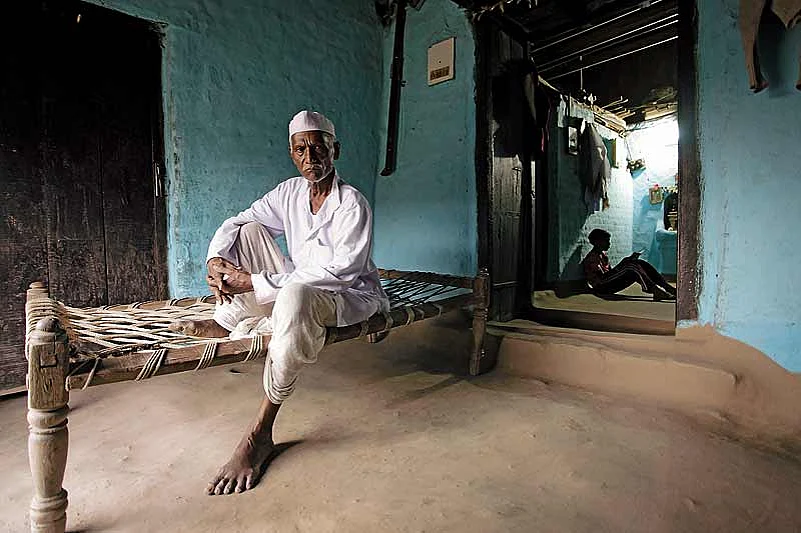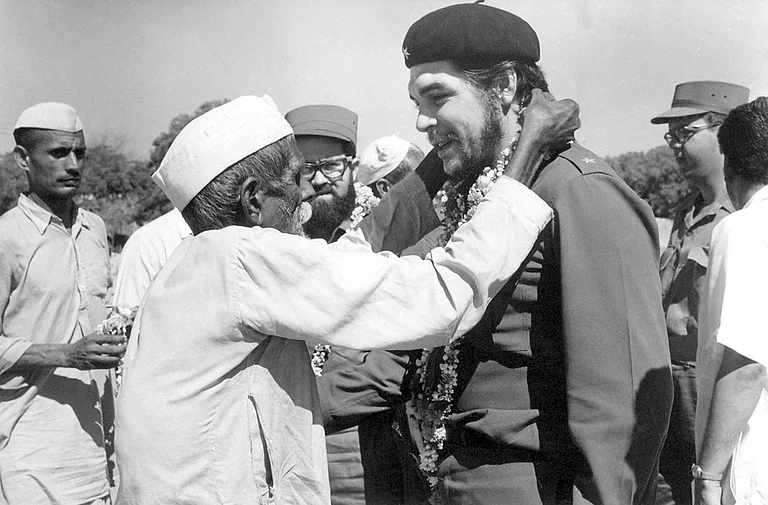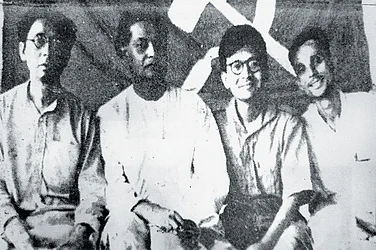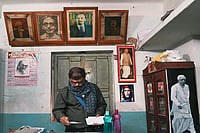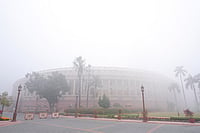
A week after Outlook put the spotlight on the UPA’s farm loan waiver of 2008 (a draft audit by CAG revealed shocking gaps in the implementation of the Rs 52,275-crore scheme), the story continues to simmer. The numbers are huge—an estimated 34.5 lakh eligible beneficiaries did not get any waiver; around 7 per cent or 24 lakh people who benefited were not actually eligible for the relief. The BJP has demanded a CBI probe; and the opposition parties will take up the issue when the CAG report is placed in Parliament during the Budget session starting later this month. In particular, the role of microfinance institutions (MFIS) has come under the scanner. D.K. Mittal, secretary, financial services till recently, says there is no cause for alarm, as “accounts where loans have been wrongly waived are being reversed. In the case of MFI accounts, no public sector banks are involved. Only two private banks—ICICI Bank and HDFC Bank—have been found to have done so.” A senior UPA minister also admitted that plans to have another round of loan waivers—under discussion for some time now—is now off, fiscal prudence and the damaging CAG findings leading to a rethink. To look at the on-ground impact, Outlook reporters spoke to farmers in three states:

Gajanan Puri, Waifad: “The crops failed soon after the loan relief offer...so after that we’ve only borrowed but not paid back.” | Photo: Apoorva Salkade
Maharashtra
Pay Up First, Get Relief Later
It’s after sunrise and despite the chill, women in Dorli village, Vidarbha, are busy putting rangoli outside their houses, hoping for an auspicious day ahead. It’s the same village that had hit the headlines in 2005 when it was put up for sale after a spate of farmer suicides in the region.
Bhanudas Zoting, in his 60s, can no longer afford to continue farming. He owns some 8.5 acres of land in the adjoining Waifad village, where he used to cultivate cotton, soybean and tur dal until a year ago. Now he has given the land on lease at Rs 3,000 per acre to help repay a loan of over Rs 1 lakh. He is among several in the village not to have benefited from the loan waiver/debt relief scheme in 2008. “I did not get the waiver because I did not have the money to pay the remaining outstanding amount. If we had that money, why would we keep it in the first place?” says Zoting, who has a family of five to look after. His son died in a farm accident years ago.
Most farmers in this region have land holdings of above five acres and loan amounts ranging from Rs 20,000-50,000, seldom topping the Rs 1 lakh mark. Officials from the Waifad branch of Bank of Baroda, which Prime Minister Manmohan Singh had visited, confirmed that the waiver of Rs 20,000 was extended to farmers who paid up the remaining outstanding amounts on their loans. “It was as per norms,” says a former official. Activists like Vijay Jawandia say nearly 18 per cent of the farmers did not benefit as “the eligibility criteria exposed gaping holes in the understanding of the agrarian crisis”.
Initially, farmers with less than five acres of land were given complete waiver. That left over 70 per cent of Vidarbha farmers out. Later, an extended waiver was given and those with over five acres too became eligible for Rs 20,000. Which in turn led to irregularities and charges of unfair treatment by Vidarbha’s farmers. Farmers in several villages in Wardha and Yavatmal districts had versions of the same story to tell, underlining bad management. Bank officials who had executed the scheme in 2008-09 initially claimed there were no irregularities from their side. However, on probing further, they admitted that some of the loans were disbursed without adequate checks. “We were under tremendous political pressure...loans were given without conducting thorough enquiries,” says an official at the Waifad branch of Bank of Baroda. Of the 1,250 crop loans issued by the bank, 325 are accounts which have defaulted.
The cycle of allegations does not end here. Incomplete documents and complicated ownership patterns were cited to deny relief in scores of genuine cases. “I got Rs 20,000 benefit after paying the remaining Rs 10,000 when the waiver was announced,” says Gajanan Puri, who has a seven-acre farm in Waifad. Since then, crop failures and the marriage of a daughter has made Puri borrow several times. Today, he has a loan of over Rs 75,000 but no means to repay. His son, Rahul, who has studied up to Class 12, did not appear for the final exam as there was no money to travel to the faraway exam centre.

Ram Baran, Pavesura village: “If they want to seize my land, they can do so. I have no money to repay the loan. What can I do?” | Photo: Sanjay Rawat
RAJASTHAN
A Pumpset And No Water
Dholpur, a border district in eastern Rajasthan on the Chambal river belt, is known more for its crime rate and illegal arms trafficking than farming. Most of the region is redstone country. In the Badi block of this district lies Kanchanpur, also known as ‘chaudi patti’ or the green belt, which is dominated by the upper castes, especially Rajputs. Most of them are small farmers with less than five acres of land. Practically everyone in the village has taken farm loans but almost nobody benefited from the mega loan waiver/relief schemes of 2008-10.
Ram Baran from Pavesura village, a farmer with 2.5 acres of land, got a Rs 22,000 loan from Bhumi Vikas Bank. The bank sanctioned the money directly to the pumpset seller in 2006. Ram Baran installed the pump in his field but with the drought there was no water for a couple of years. The loan waiver scheme announcement came as a relief, as he thought he qualified for it. “Instead of any relaxation, all I got was a notice to pay Rs 37,000,” he says. The amount is still to be repaid.
With just 0.25 hectare land, Yogendra Singh is one of the poorest farmers in the village. He got Rs 32,000 loan from Rajasthan Grameen Bank in 2007, and had repaid Rs 4,386 by March 26, 2008, a month after the central government announced the loan waiver scheme in the budget session. “The instalments have become a curse for me. They (bank) have sent me repeated notices to repay all the money. I am an eligible candidate but no one listens to my requests,” says Yogendra, whose wife is ailing and son is still in school.
The journey from Delhi to Dholpur via the spanking new Yamuna expressway in a way reflects the disconnect on the ground as for almost 200 kms you seem to zip along on no man’s land. Ramesh Kotwal, a social activist from Dhaulpur, points to the irony of the scheme that benefited “all those who didn’t pay even one instalment. In fact, many of the dishonest ones have taken loans again in the hope that it will be waived off again”.

Malthu Chamar, Gidkhini: “Only the big Brahmin farmers benefited. We are still awaiting relief after a decade of drought.” | Photo: Sanjay Rawat
MP
“Take Our Heads, We Just Can’t Repay"
The last two years of rains have not as yet erased the scars of a decade of drought in the districts of the Bundelkhand region in Madhya Pradesh. Crossing the bridge on the Betwa river to enter the Tikamgarh district of MP, the faded, mud-washed slogan, ‘Dilli Chalo’, from the Jan Satyagrah Yatra last year is still visible. (Over 50,000 farmers had marched towards Delhi from Gwalior demanding a pro-people land acquisition policy. They were stopped at Agra!)
In Gidhkhini village of Tikamgarh’s Niwari block, people are initially reluctant to talk about the loan waivers fearing that we are recovery agents of the banks or government officials. After some cajoling, Bhajju, a 45-year-old farmer with 1.5 acres of land, says that in 2006 he had taken a Rs 12,000 loan from the local State Bank of India branch. He repaid Rs 5,000 in 2007 from his savings working as a migrant labourer in Delhi.
The 2008 scheme raised hopes that he would be given some relief. “I was an eligible candidate for the benefit. They should have waived off my entire loan but, instead, notices are still coming to me,” says Bhajju. The last notice, served in January, has given him an ultimatum—deposit Rs 15,429 by February 7, or else. So, is he going to deposit the money? “I am going back to Delhi after the wheat harvest. I don’t have enough savings to pay back,” he says.
Malthu Chamar, 75, shows us the notices he has been receiving every alternate month from the bank and tehsildar office for repayment of Rs 20,000. All he has is a dilapidated home to shelter his family and a goat. His four-acre landholding is largely unfit for cultivation. “They told me my loan would be waived off but only the big farmers (the Brahmins) of my village have benefited. We are still waiting for relief after a decade of drought.” Almost 90 per cent of the 3,500 population in the village is in a similar state. As ex-sarpanch Laxman Ahirwar puts it, “You can take our heads, we just can’t repay the money.”






